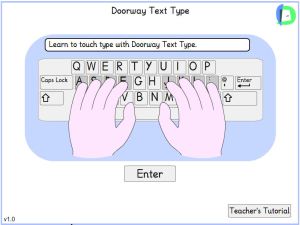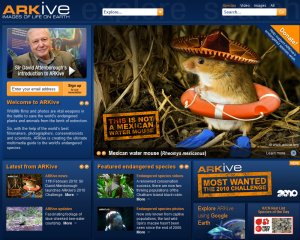A New Direction
Well, hello. It’s been quite a while since my last blog post, and with good reason. Last year I changed my job; no longer am I school based. These days I work at TES, devoting time to finding and creating quality resources that support pupils with SEN. I still, however, like to keep up to date on what is happening in education and spend time exploring lots of web based ideas I think might be interesting and I thought, what with today being the 29th February and therefore a little special, I’d share a few new finds an old favourites. All these sites have some link to inclusion (even when it’s not obvious – I will explain) and all of them are free to use. So here we go – a special top ten for a special day! Hopefully there’s something for everyone here.
1. Doorway Online: I love this site. I cannot stress how useful it is for so many reasons! All the activities on here have been created with inclusion in mind and would be useful across a number of different settings. All the activities have a clear font and an uncluttered layout. It’s just lovely 🙂
2. Poisson Rouge: If you haven’t indulged it the joy of the Red Fish you really need to check it out! No instructions and some areas are undeniable French (it is a French website after all) but within the madness there are some great activities The ‘School of English‘ (the castle) is quite handy for learning vocab and other languages are supported too – making it great for MFL. In the bugs section (flower on the windowsill) there are lovely basic mouse skills activities and matching games that would be useful to use with pupils in EY or SEN settings. Everything is brightly coloured and engaging. Some items might be a little annoying (the choir is distinctly odd) but there is a wealth of usefulness within the site – both ICT skills wise and across other curriculum areas.
3. Literactive: This is one of those websites you will either love or hate. It’s free to register and you can ask to register with UK English (the site is American). I just found that the Road to Reading section had some really useful sequencing and memory based activities that some pupils with SEN found both engaging and enjoyable. It is pitched at a young audience but the animated content in the sequencing activities and some of the more cartoony elements mean that you could use it with some slightly older pupils if you needed to.
4. Help Kidz Learn: Another website that has been created with inclusion in mind (after all – it is from the bod at Inclusive Technology), this one has lots of beautifully presented and helpful activities across a number of areas. As you would expect, the activities are switch accessible and are all aimed at a basic skill level. This doesn’t take away from the beautiful design of them and I particularly like the creative section.
5. Bembo’s Zoo: I have a real soft spot for this website. It inspired one of my first blog posts and is truly beautiful. You would need to be creative to find lots of ways to include it in your teaching (although animal and alphabet focused sessions are a given) but it’s worth exploring. Even if it is just for fun.
6. TESiboard: I was a big fan of TESiboard long before I went to work at the TES. I’m still a fan. A plethora of great interactives from, EY to KS2, that can be used in a number of ways. And, from read aloud story books to creative activities (taking in lots of great curriculum topics along the way), there is so much here that’s available to support pupils with SEN. I remember suggesting this one to a 1 to 1 TA when the class were writing about their families – she needed something quick and accessible for her charge and this did the job brilliantly!
7. ARKive: A fabulous website with so much information included it’s mind boggling. It even has a layer you can use when accessing Google Earth! Loads of video and photo content, which is fabulous quality, and supporting teaching resources and games too. I think it’s just an amazing site that you (and the children) will want to explore time and time again.
8. Qwiki: It’s not perfect but any website that allows you to search for a topic then watch a slideshow about that topic while listening to audio content (a little fast but still useful) has to be a winner. Yes, the automated voice is a little annoying (but you can control the volume and pause the slideshow/go back over things) and the images are sometimes not the most accurate (check something before you let the children loose) but the pros still outweigh the cons as far as I am concerned. It even has read along captions with the slideshow which you can turn off if you want to.
9. Dabbleboard: There always seem to be new tools appearing that can be used to support collaborative learning and thinking skills within the classroom. Dabbleboard takes elements of both and fuses them together seamlessly. You can draw. You can type. You can add shapes, arrows and lines. You can share. You can chat. You can insert pictures and documents. Truly fab.
10. Teacher LED: Lots of nice, clear activities for your IWB. Many are maths based but other areas are covered too. I really like the new Word Circle activity, mainly as it reminds me of a similar idea I had using PowerPoint. I’m also a fan of the Map Maker. Some of the maths based interactives are the best I’ve seen – just take a look for yourselves.











